For the last few years I’ve been pruning my young pines down to a single sacrifice branch. This slows growth but allows me to fit more trees on the bench.
Decandling time is a good time to do this work because it gives me the opportunity to slow down branches that are gaining too much vigor low on the trunk.
In general, I like keeping small branches on the lower trunk that I can use to build the future primary branches. If I let these branches grow freely, they’ll become too big to use in the final design.
By keeping this growth in check, I can have nice, small branches waiting for me when I need them.
Here’s a tree in its seventh growing season. I’ve already focused growth onto a single sacrifice branch, but I want to remove the lateral shoots that developed in spring so I can maintain a single line of growth.
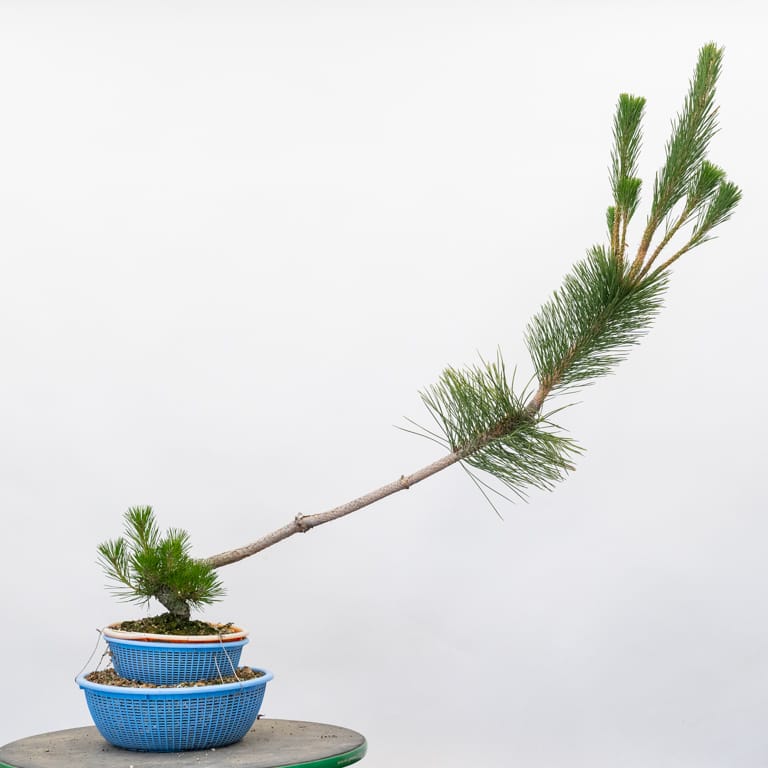
Young pine
I will also remove needles on the sacrifice branch as this can stimulate budding on the lower trunk and decandle the lower branches to keep them from getting too big.
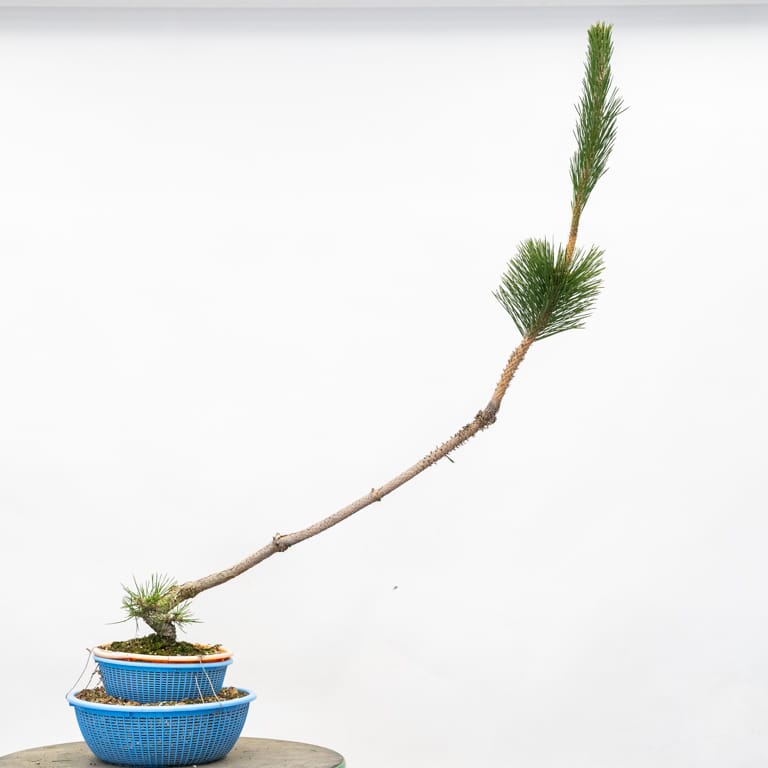
After reducing spring growth
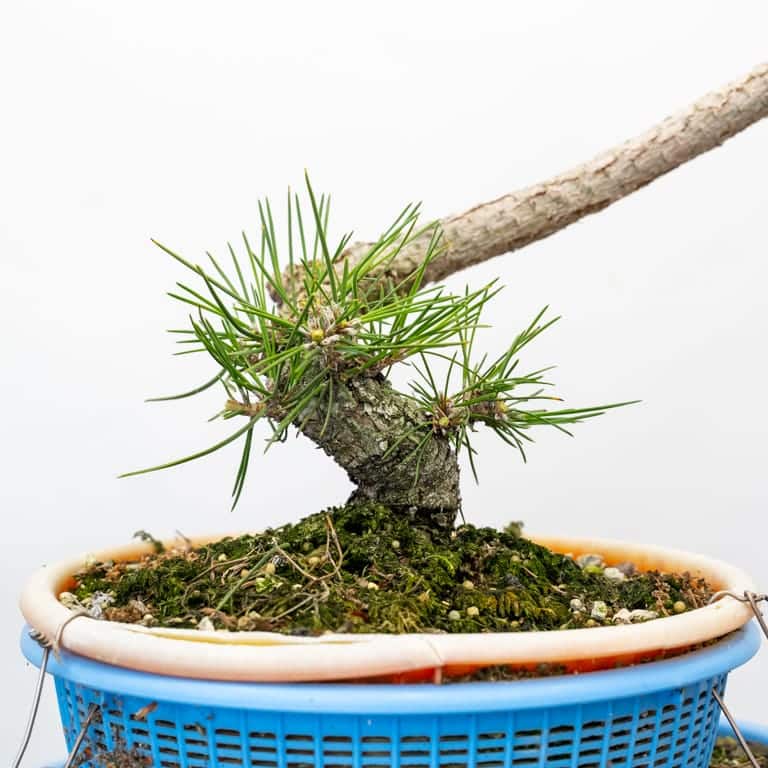
Close up of the decandled lower branches
Here’s another example. This tree is about eight years old. I removed the first sacrifice branch one or two years ago and am now letting a second sacrifice branch develop to create taper on the upper portion of the trunk.
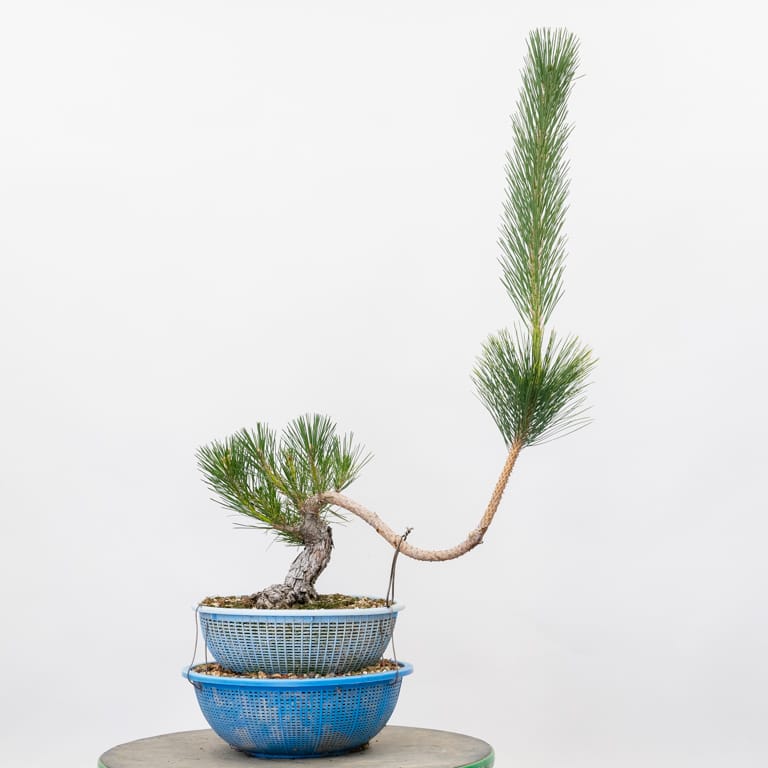
Young pine with a single sacrifice branch
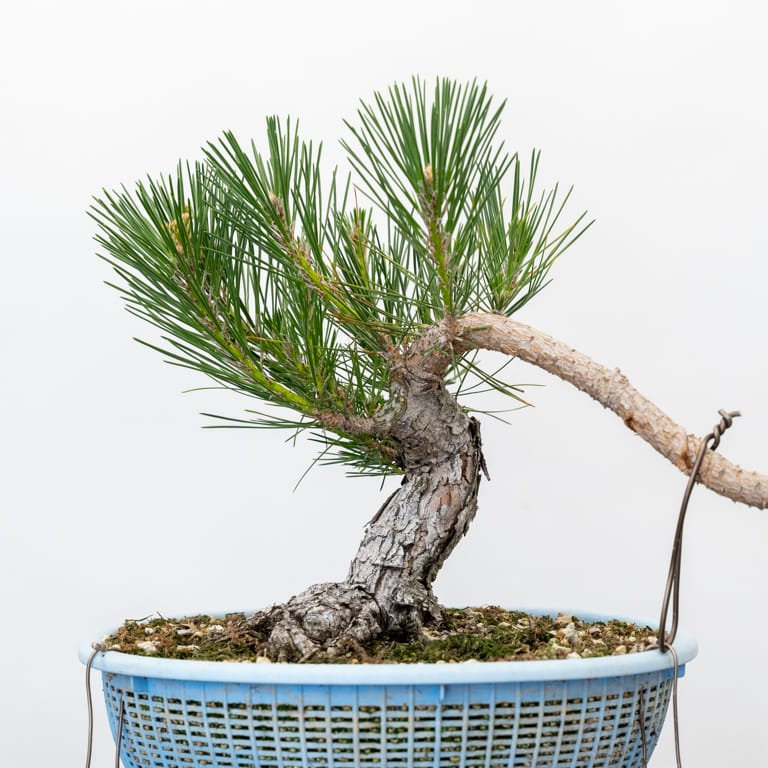
Lower branches before decandling
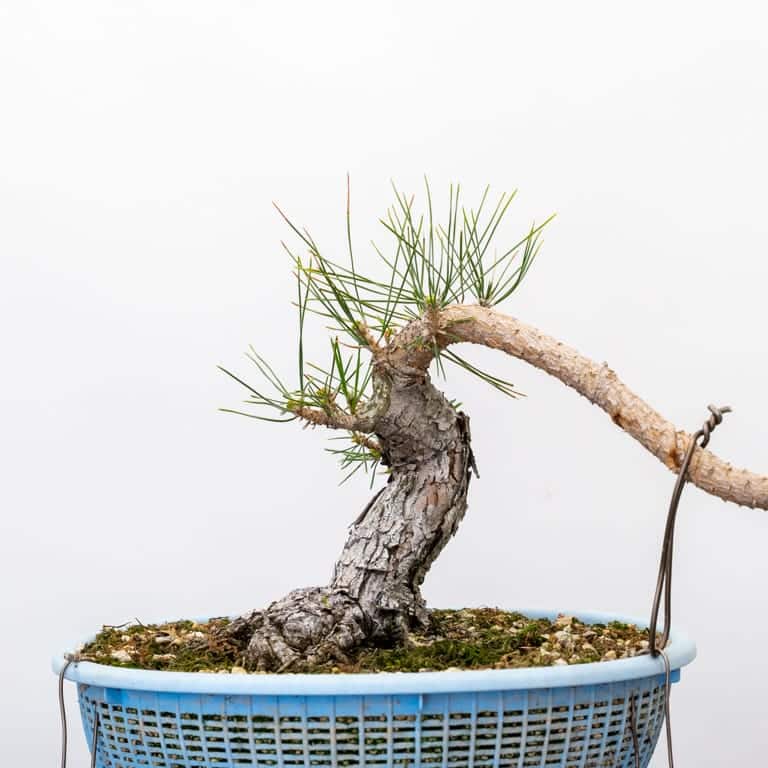
After decandling and removing excess needles
I now have a single uncut shoot on the tree and a small number of needles on the lower trunk to support the lower branches.
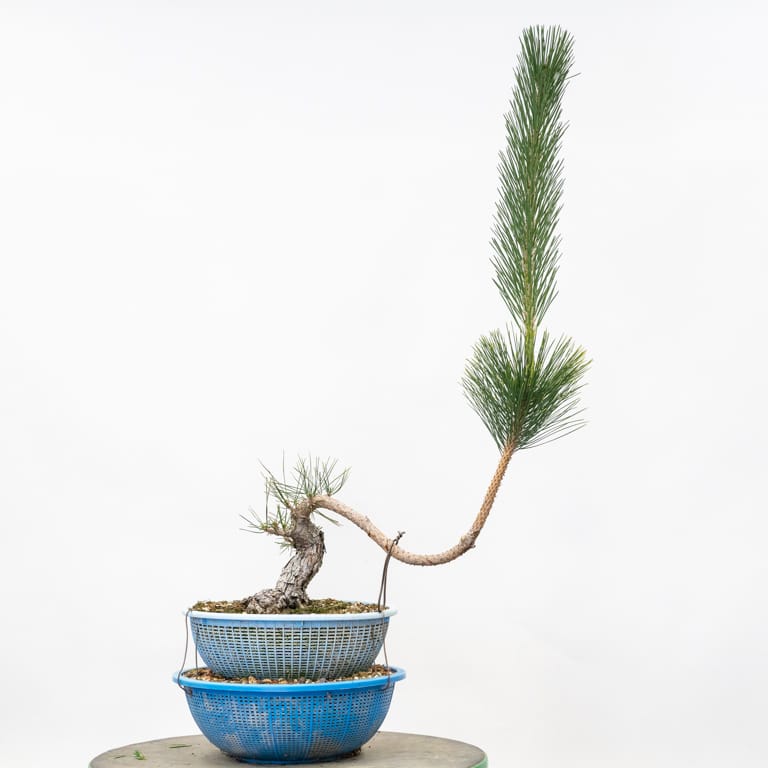
Eight year-old pine
Why grow the sacrifice branch off to the side? Simply to ensure the lower branches receive adequate sunlight.
I plan to leave this sacrifice branch for another year or two before removing it and deciding on whether or not the tree will need a third sacrifice branch.
Speaking of development techniques, you can now watch highlights from the Bonsai Society of Portland’s Farm to Table event on YouTube! Details below.
BSOP Releases Videos of Recent Farm to Table Event
For those who missed the Bonsai Society of Portland’s Farm to Table event, you can now catch key presentations online, including Tom Fincel’s Top-Down Repotting technique.
- Day 1 – Grower’s Panel: John Eads, Matt Reel, Michael Hagedorn, Andrew Robson and I address questions about working with field-grown material.
- Day 1 – Super Critique: The panelists offer concrete next steps for improving participants’ trees.
- Day 2 – Chris and Lisa Kirk Tell the Telperion Farms Story: A rare opportunity to hear the Kirks share details about how they got started making the trees for which Telperion is known.
- Day 2 – Top-Down Repotting Technique for Field-Grown Trees: Tom Fincel breaks down his approach for transitioning trees from the field to bonsai pots.
Subscribe to Bonsai Tonight
New Posts Delivered Every Tuesday and Friday
Alex Braunton says
Hi Jonas,
Thank you for sharing. I’ve got about 7 black pines like this which are about 3 to 4 years old. I’ve witnessed some fantastic growth in the past few years.
At the moment mine are wired and bent into all sorts of shapes but my goal has been trunk size and girth. Should I leave all candles and branches alone to get maximum growth or follow your approach? Most trees have 2 to 3 sacrifice branches and then a mixture of branches all over the tree.
Thank you,
Alex
Jonas Dupuich says
Since you have 7 trees you can try different approaches and see which work best based on your goals.
If your goal is thickening, keep everything. If you want budding in a space that currently has needles but no buds, reducing the sacrifice growth can stimulate new buds.
Ryan says
What’s the benefit of maintaining a single line of growth, as you did in the first picture? Isn’t this reducing photosyntethic mass, thus slowing down thickening?
Jonas Dupuich says
Every Japanese article I’ve seen on the topic does it this way and from what I can tell the main benefit is to get better budding. Another benefit is that the lower branches get more sunshine which also stimulates budding.
Steve WA says
Thanks for the article and moving the sacrifice to the side, doesn’t removing the shoots from the sacrifice slow growth to the trunk?
Jonas Dupuich says
It does slow down trunk growth, but I get better budding and can fit more trees on the table.
Jef Porto-Carrero says
Nice 🙂
By decandeling the lower growth, do you mean removing the entire new candle?
Jonas Dupuich says
Thanks! And yes, I remove the spring growth with the expectation that the shoots will re-grow over summer.
Yaroslav says
Do you use this decandle technique for single-flush pines like Scots pine?
Jonas Dupuich says
I’d use some form of decandling techniques with Scots pine but I don’t know the specifics as I haven’t worked with the species enough to know how they’d respond in the development stages.
Ken Bross says
Hi Jonas,
Great timing for this article. And a great article as always. Do you decandle ALL shoots from below, or only the stronger ones? I repotted some pines this past spring, and some new candles are small. Should I leave those this time around? Or do I decandle all lower shoots and let the sacrifice branch grow? Thanks,
Ken
Jonas Dupuich says
Thanks, Ken! If the new shoots below are small I generally leave them alone. When the lower buds aren’t strong enough to push the branches can fail to produce summer growth. Plus, when the shoots are small, there’s little thickening and the internodes remain small.
Gary McCarthy says
I know normally after decandling a mature JBP you don’t fertilize till you shoot select in September. How do you handle the fertilizing for these younger trees in development after decandling? Thanks!
Jonas Dupuich says
Good question Gary – I’m trying both ways to see if it makes much of a difference at this stage. I’m leaving existing fertilizer in place, continuing to add fertilizer to trees on the less vigorous side, and holding off for a month on fertilizing the most vigorous trees.